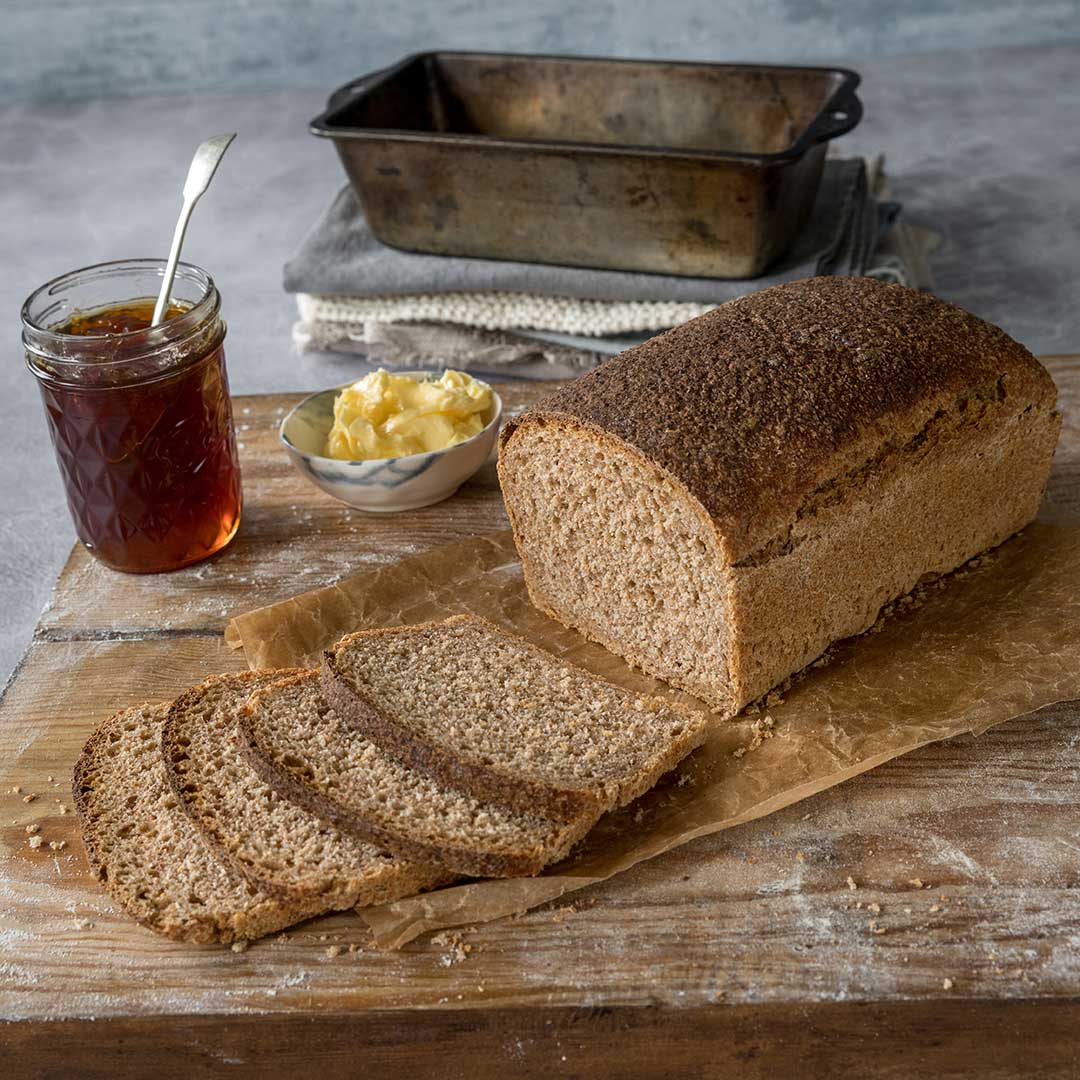

Sourdough Wholemeal Spelt Loaf
About this recipe:
Made with the simple basic ingredients of flour and water there are three distinct stages to making a sourdough loaf, the starter, the ferment and the dough itself. The bread will take a while to create while the eventual bake will have an appealing and complex sourdough taste and aroma.
* Alternatively, use Organic Wholemeal Rye Flour or Organic Emmer Flour *
Before you begin to make your sourdough, we recommend reading our Guide to Sourdough Making alongside our handy Sourdough Starter Chart.
Equipment:
2 x mixing bowls, 1kg/2lb bread tin and 500ml glass bowl
Ingredients:
STARTER
8-10 tbsp Doves Farm Organic Wholemeal Spelt Flour* (see above for alternative flour suggestions) *
8-10 tbsp tepid water
SPELT FERMENT
50g spelt starter (from above)
150ml tepid water
100g Doves Farm Organic Wholemeal Spelt Flour
DOUGH
175ml tepid water
300ml spelt ferment (from above)
400g Doves Farm Organic Wholemeal Spelt Flour
1 tsp salt
1 tbsp oil
oil, for tin
Method:
220°C, Fan 200°C, 425°F, Gas 7
Starter – use this handy chart to help you keep track of your feeding times.
- On the first day, put one tablespoon of wholemeal spelt flour and one of water into a 500ml glass bowl and mix together.
- Wet a clean tea towel, wring it out well, lay it over the bowl and leave in a warm place for about 12 hours.
- After the 12 hours have passed, add another tablespoon of flour and another of water, mix together, cover with the damp tea towel and leave for another 12 hours.
- On day two (24 hours since beginning your starter), stir in a third tablespoon of flour and a third spoon of water, stir to mix, cover again with the damp tea towel and leave in a warm place for 12 hours.
- For the second feed of day two, add a tablespoon of flour and one of water, stir to mix, cover with the tea towel and leave in a warm place for 12 hours.
- For the first feed of day three (36 hours since beginning your starter), increase the feed by adding two tablespoons of flour and two of water, stir to mix. Re-damp the tea towel if necessary, lay it over the bowl and leave in a warm place for 12 hours.
- On the second feed of day three, add one tablespoon of flour and another of water, mix together, cover with the damp tea towel and leave for another 12 hours.
- At this point your starter should be bubbly and ready to create your ferment. If the starter is not showing bubbles, repeat the 12-hour feed and water routine, and ensure the starter is kept in a warm place.
Spelt Ferment
- Once your starter is bubbly, stir it and measure 50g of the starter into a large mixing bowl.
- Pour 150ml water into the bowl and stir until lump free.
- Add 100g wholemeal spelt flour and stir to mix.
- Invert a larger mixing bowl over the dough bowl and leave in a warm place for 4-12 hours until bubbles appear. When bubbly, your ferment is ready to use (you can either dispose of any unused starter after bread making or keep and feed it regularly until your next baking session).
1st Dough
- Pour the tepid water into the ferment and mix well.
- Add the flour to the ferment and stir to mix.
- While the dough is still craggy and lumpy, stir in the salt.
- Using your hands gather everything together, gently pressing into a ball of dough.
- Knead the dough in the bowl for 100 presses without adding flour.
- Invert a mixing bowl over the dough bowl and leave in a warm place until double in size which may take 4–12 hours.
2nd Dough
- Rub some oil around the inside of a 1kg/2lb bread tin.
- Run a spatula around the edge of the swollen dough.
- Pour the oil onto the dough and dip your fingers in the oil.
- Pick up the dough on the far side of the bowl, gently pulling and stretching it upwards then fold it forward onto the dough still left in the bowl.
- Turn the dough a quarter to the left or right.
- Repeat the action of lifting and stretching the dough then folding back onto itself five or six times, turning the bowl each time.
- Tuck the edges of the dough shaping it into an oblong.
- Transfer the dough to the bread tin.
- Invert a mixing bowl over the bread tin and leave to double in size, 2-12 hours.
Baking
- Pre-heat the oven 20 minutes before you are going to bake.
- Remove the upturned bowl.
- Bake for 35-40 minutes until golden brown.
- Transfer the bread to a wire rack and leave to cool.
Click this link to find a handy Sourdough Starter Chart which when printed has space for you to enter the day and time that you feed your starter with flour and water and to help monitor progress.
This Guide to Sourdough Making contains lots of hints and tips for successful sourdough bread making.
Leave a review?
Leave a Reply
YOU MAY ALSO LIKE
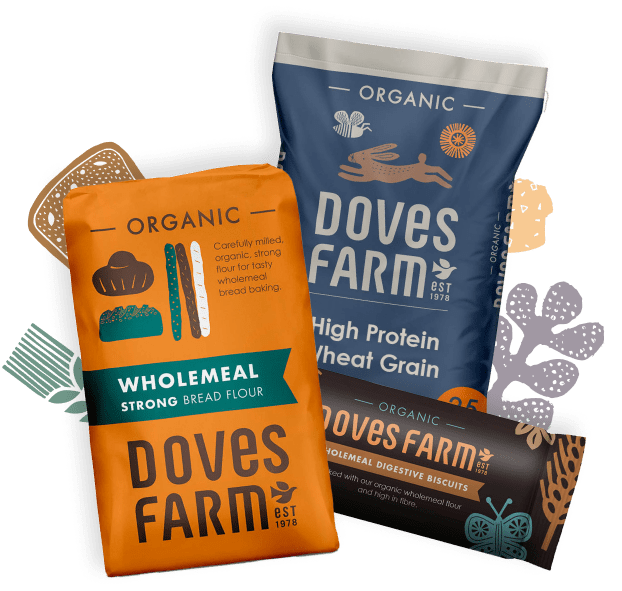

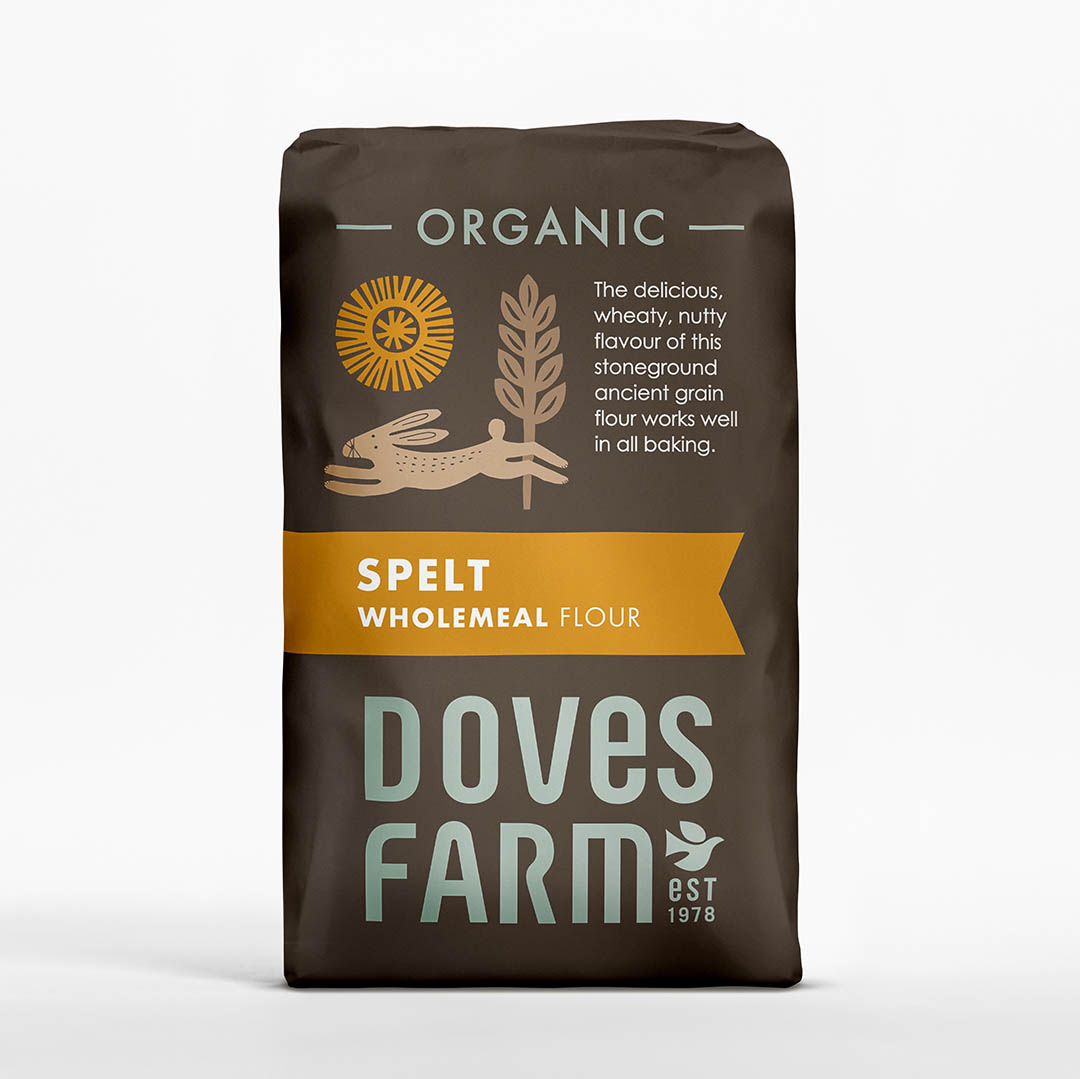
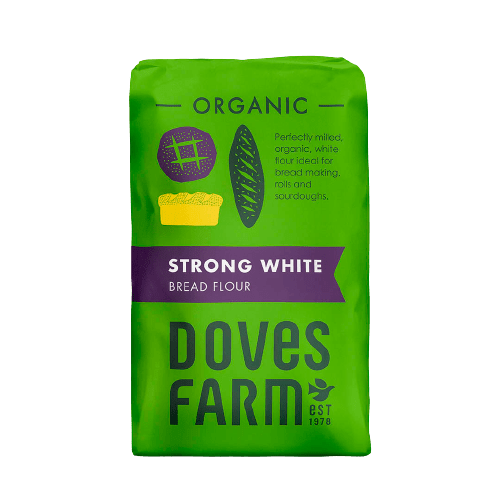
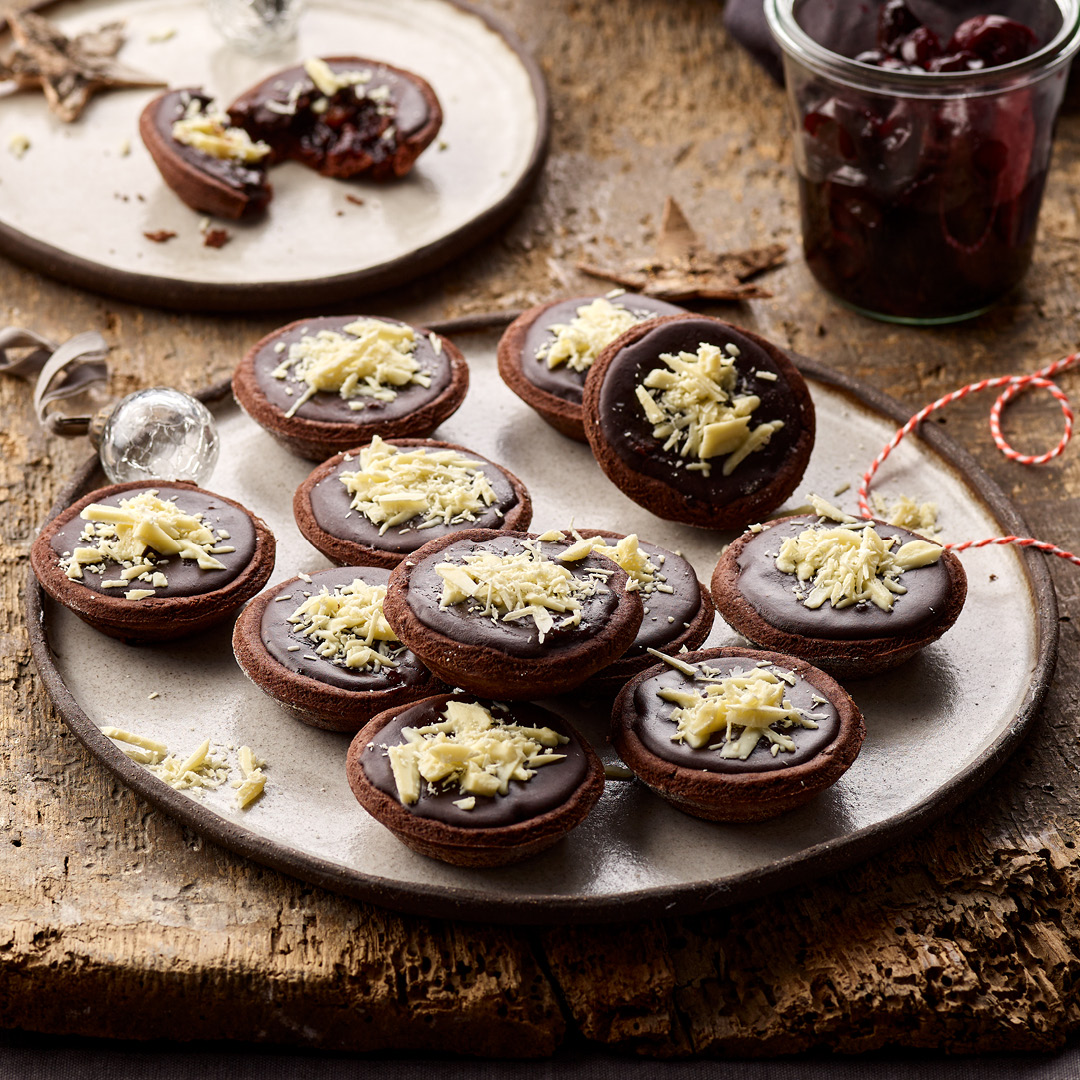

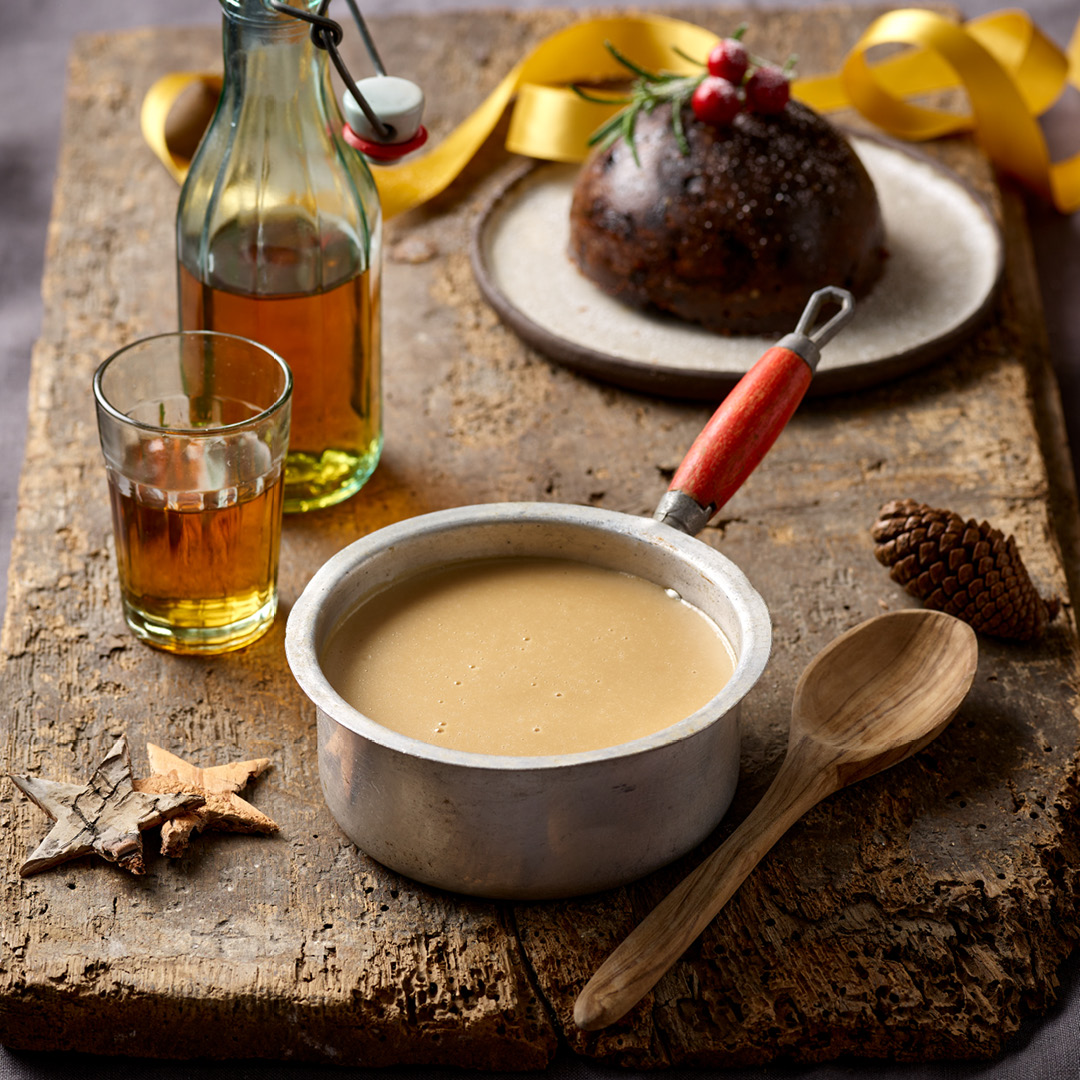
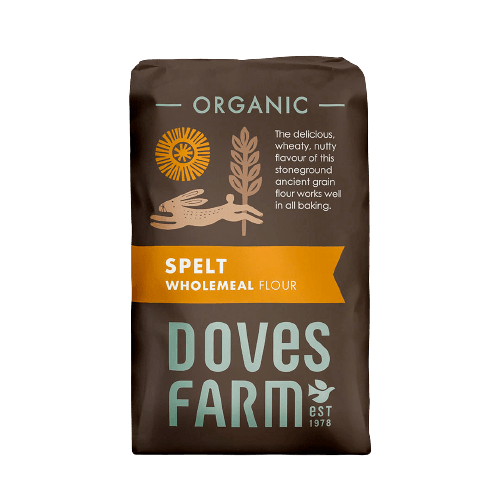
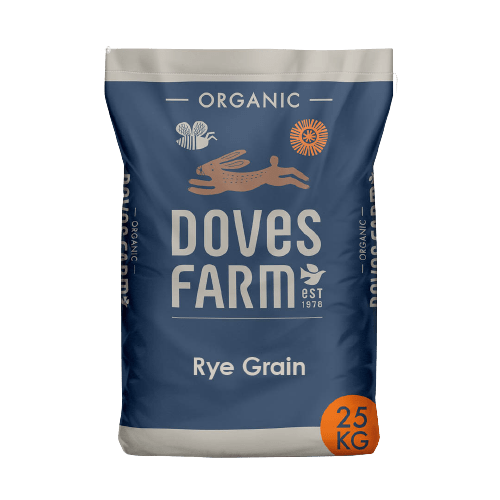
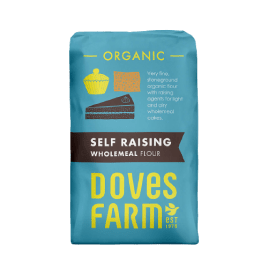
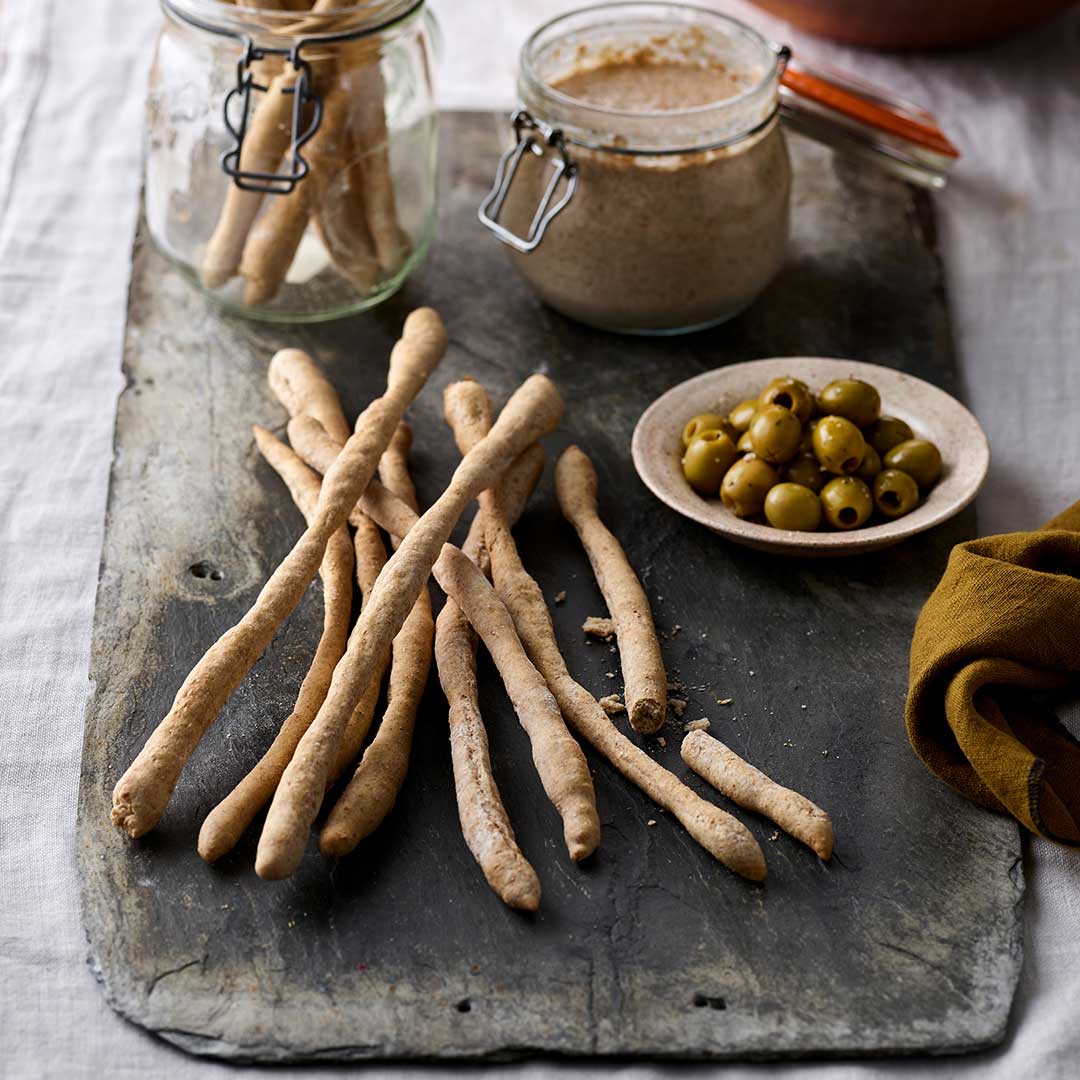
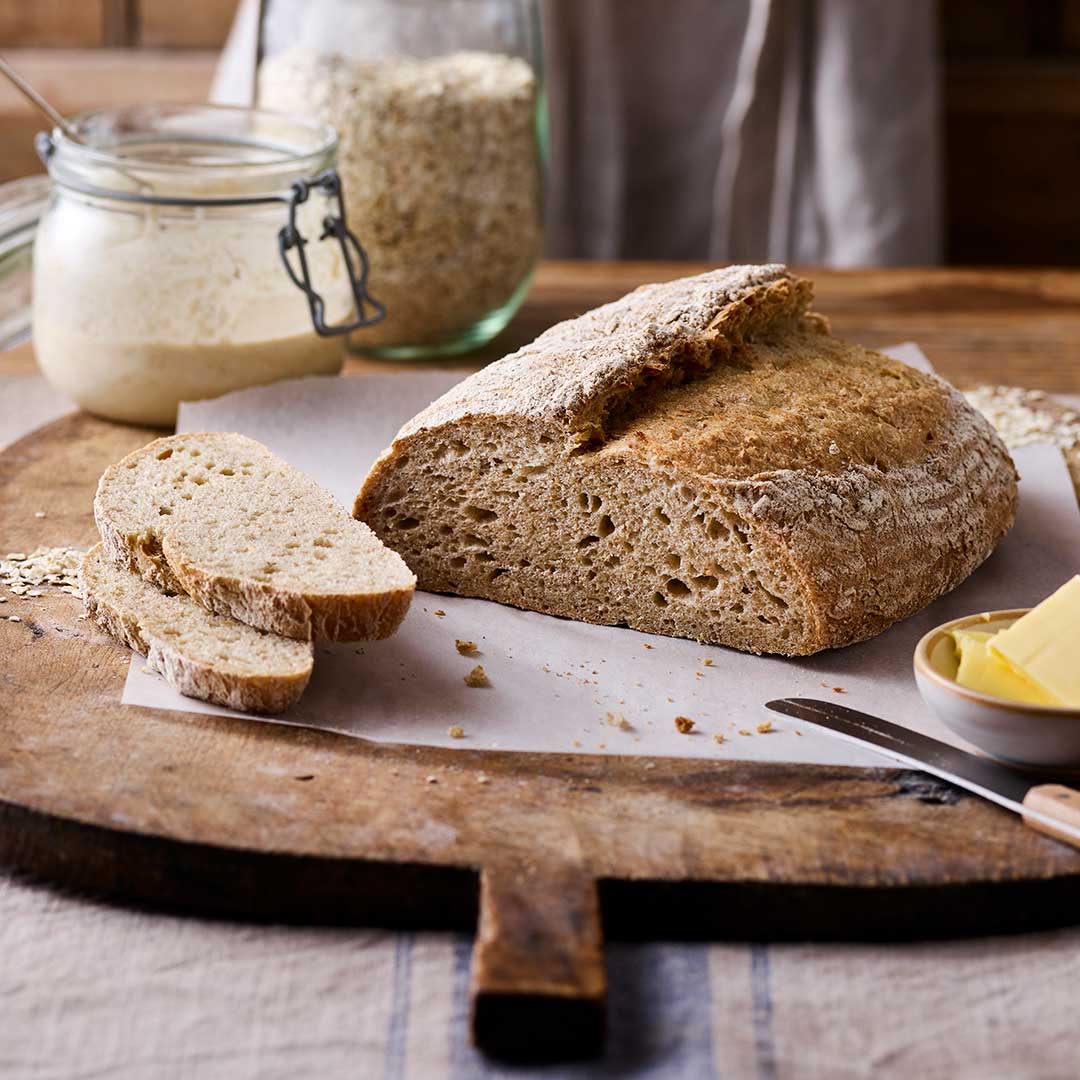
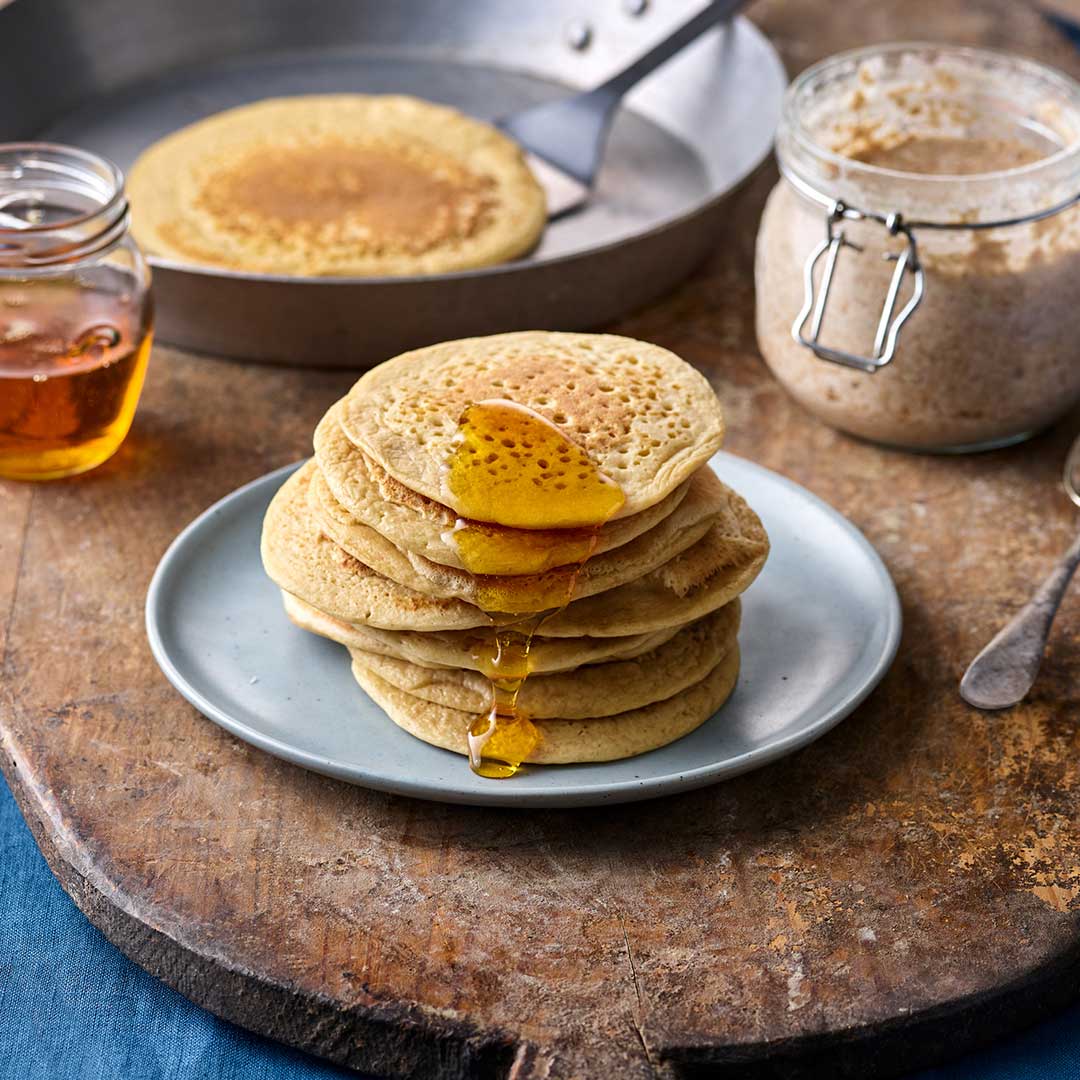
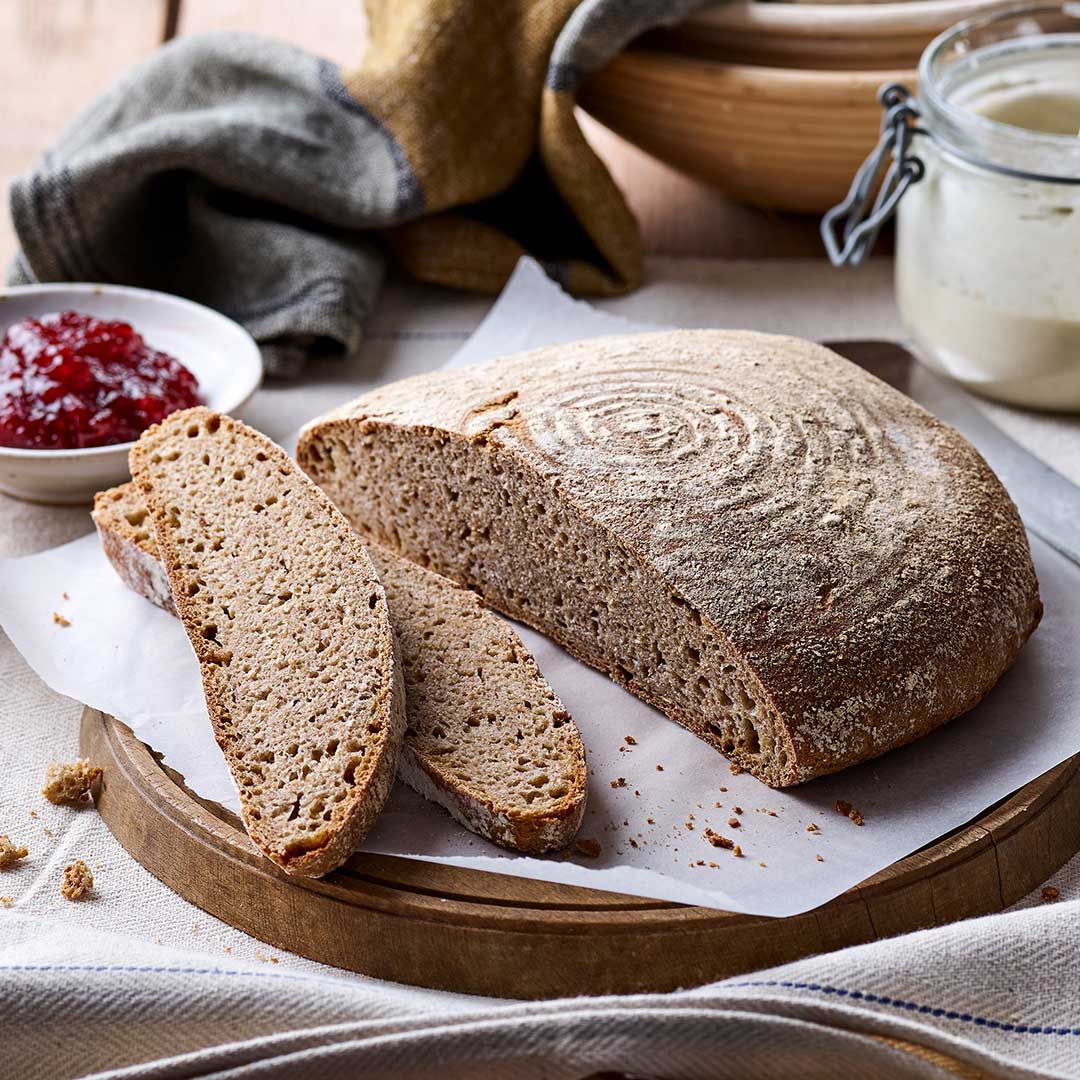






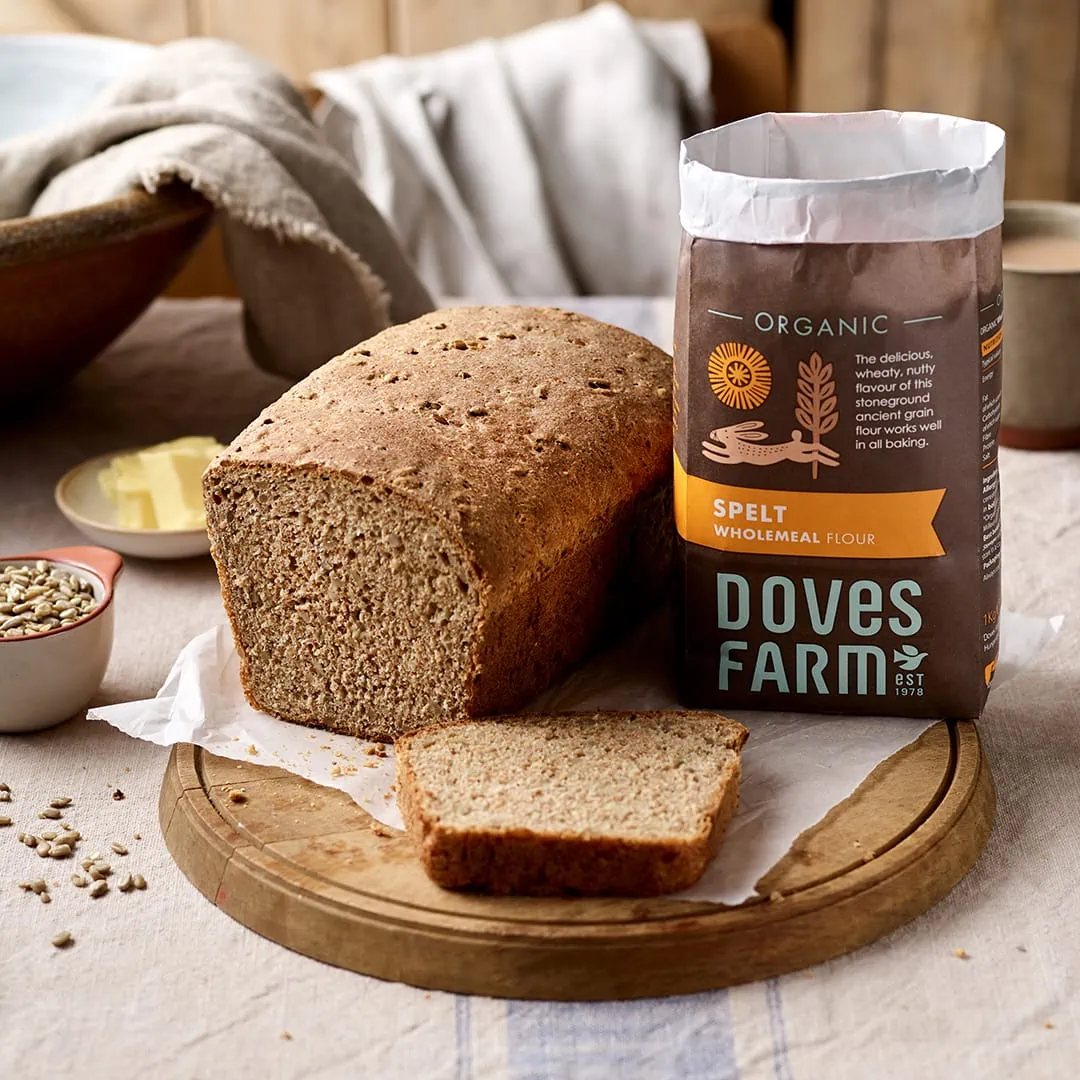
Violeta Ivanova
This is my favourite sourdough bread. It is very tasty and the recipe is easy to follow. Depending on the temperature in my kitchen the time may vary.
Reviewing: Sourdough Wholemeal Spelt Loaf
Alicia Coumbe
I've been making this sourdough bread for a very long time, I would guess around 2 years. It's very easy to make and has a nice texture.
Reviewing: Sourdough Wholemeal Spelt Loaf
conall
I followed the recipe completely and everything took the amount of time specified, ended up with a good rise, nice crumb, etc. All great until I tasted it and it was unpalatable inedibly sour. Maybe it's a taste thing, I enjoy sourdough usually but this tasted like I had poured a cup of vinegar in to it. I've given 3 stars just in case this is how it's supposed to be and others like it but mine ended up in the compost.
Reviewing: Sourdough Wholemeal Spelt Loaf
Grace Knight
I used a regular white starter and also went for a 50/50 mix of spelt flour and white flour. It came out great. Strong sour flavour which I love. Not large holes but definitely some open crumb happening. For the first rise I left it overnight, so about 10 hours. For the second rise I left it for 3.5 hours.
Reviewing: Sourdough Wholemeal Spelt Loaf
Magda
I have used this recipe a few times now, and it has been consistently good despite having to cook it in the top oven which is not ideal. I have taken to mixing the wholemeal spelt flour with some lighter spelt flour and this works even better.
Reviewing: Sourdough Wholemeal Spelt Loaf
Felicity Lawler
I used my usual rye sourdough starter as I didn't want to make a spelt starter. The recipe omits the addition of salt, which I think is a mistake, therefore I added 8g salt with the flour. I let the dough prove overnight. The resultant loaf had a good 'spelt' flavour, with a nice soft and light crumb and a crisp crust that was neither hard nor chewy. I would make this bread again. I have noticed also that the recipe for a white spelt loaf has the addition of salt omitted. Is this too a mistake.
Reviewing: Sourdough Wholemeal Spelt Loaf